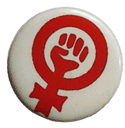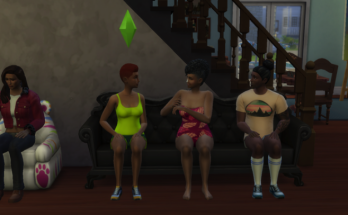Finding a feminist, safe space online that engages with issues such as class, gender, and the envision of the body can be hard to get particularly if, as users, we do not always feel welcomed or comfortable in these spaces, whether it’s mass social media (such as Instagram, Facebook, or Twitter) or smaller places, like blogs and forums. It is even harder if we add race to the equation, for it necessarily forces us to consider an intersectional study within the internet.
“The internet creates new social spaces, shapes social relations and reconfigures the public/private and local/global divides, as well as institutions like the state, market and community […] Feminist might do well to not stop at online feminism but to actively engage with the constitutive forces behind the internet” (Shepard, 2017). As online feminism has found a renewed platform inside social media, it has been a premise of the movement to use these apps as a medium to construct and reach out to a wider audience.
That being said, the first question that comes to the mind is, what constitutes a safe space? This is the interrogation that should be the center of the analysis, and yet there is not one constituted answer, particularly because safety has different meanings depending on the user. However, and in the most basic sense, we could define a safe space(s) as a site where the person behind the avatar (and even the avatar itself) can feel secure enough inside an online community, in which they can share common places with the rest of the users.
With this in mind, the purpose of this project is to analyze whether Unruly Bodies – https://medium.com/s/unrulybodies, – an online magazine under the domain of medium.com’s website, can be considered a safe space or not. Created by Roxane Gay (and following the discussion regarding her book “Hunger”), the main issue that connects the articles published on the magazine are designed to try to find answers to one particular inquiry: what is like to inhabit and live with and have an unruly body? Starting with this premise, 25 authors propose different readings regarding the body – such as the disfigured one, the disabled, the black fat body that does not stick to social limits, and so on. As this is a closed virtual magazine with very few possibilities to interact with these stories outside of it – other than sharing them via our own platforms, particularly Facebook and/or Twitter, or by “applauding” the story – it ends up being quite a restrictive yet, in my opinion, liberating place, as it speaks from personal experiences, without putting in danger any of the parties involved by not letting other users/trolls interact with them.
As the writings show, this magazine presents stories from different points of view, that is, different works associated with gender and race. To gain access, the user needs to create an account, which gives them the liberty to read a maximum between 9-10 stories for free per month; after that, and as an element established by Medium, payment is required to get the full content. This aspect presents our first question: is it really a democratic feminist colored space? What happens if a user does not have access to a payment method that allows them to navigate through the entire content of the magazine? These questions particularly refer to the importance of including the socio-economical variable when it comes to study online feminist safe spaces, and its direct relation with an intersectional examination of them.
Launched in April of 2018, Unruly Bodies (re) presented a new way to produce feminist online spaces inside mass media, while at the same time giving platform to non-traditional writers. What is even more interesting is the impact that it had later on: because of the success of this magazine, Medium launched a daily digest in which all users can contribute, regardless the type of membership they have, which gets distributed via email. The algorithm is very simple: by closely following which stories the users has read and reacted to/shared, Medium sends regular updates on stories that might be relevant to the user’s interest.
The next step on this project is to insert myself in this area, by publishing weekly stories in hopes to engage particularly Black feminists on issues regarding the body and mechanisms of control surrounding them, all while linking this to the articles on the magazine, as this would be the most proximate and easier access I could get. At the end, my main goal is to proof whether or not a magazine that poses as a feminist space, is indeed such, and if it reaches the goal to be a real safe online space of color.

